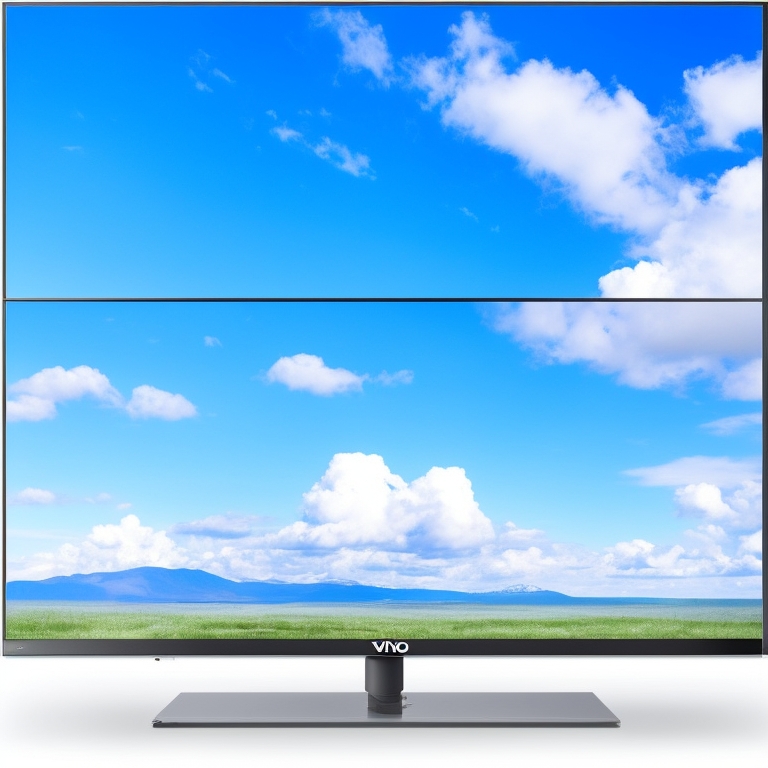How to Stream Your Computer Using a Vivo TV in 2024
Introduction
Streaming media from your computer to a Vivo TV can elevate your viewing experience. Whether you're watching videos, playing games, or showing a presentation, the steps to achieve smooth streaming aren't as complicated as you might think. This guide will walk you through the tools, setup processes, and methods to stream your computer content seamlessly using a Vivo TV. By the end, you'll be equipped with all the knowledge you need to create a streamlined home entertainment setup.

Tools and Requirements
Before diving into the setup process, it is essential to gather the necessary tools and understand the requirements for streaming from your computer to your Vivo TV.
Necessary Hardware
- Computer: Ensure your computer has a working HDMI port or supports wireless display options like Miracast or Chromecast.
- Vivo TV: Make sure your Vivo TV is a smart TV capable of connecting to external devices.
- HDMI Cable: A standard HDMI cable, which transmits digital video and audio from your computer to the TV.
Recommended Software
- Drivers: Update your graphics and network drivers to the latest versions.
- Streaming Software: Depending on your chosen method, you might need software like VLC Media Player or dedicated apps like Google Home for Chromecast.
Setting Up Your Computer
The setup on your computer is crucial for a smooth streaming experience. This involves updating your operating system and necessary drivers and installing appropriate streaming software.
Operating System and Driver Updates
- Update OS: Ensure your operating system is up to date. Whether you use Windows, macOS, or Linux, regular updates can fix bugs and improve performance.
- Driver Updates: Check and update your graphics and network drivers since outdated drivers can hinder streaming performance.
Installing Streaming Software
- VLC Media Player: A versatile option for streaming content from your computer to various devices.
- Google Home: Essential for those wanting to use Chromecast to stream content.
Connecting Your Computer to Vivo TV
With your computer set up, it's time to connect it to your Vivo TV. There are several methods to achieve this, including wired and wireless options.
HDMI Connections
Connecting via HDMI is straightforward: 1. Plug one end of the HDMI cable into your computer. 2. Connect the other end to an available HDMI port on your Vivo TV. 3. Select the appropriate HDMI input source on your TV with the remote.
Wireless Streaming Options (Miracast, Chromecast)
- Miracast: Ensure both your computer and Vivo TV support Miracast. Enable Miracast on both devices and follow on-screen prompts to complete the connection.
- Chromecast: Plug the Chromecast device into your TV, and use Google Home to connect your computer to the Chromecast. Select the 'Cast' option from supported apps or the Chrome browser.
Configuring Settings on Vivo TV
After connecting the hardware, you'll need to adjust the settings on your Vivo TV to ensure optimal streaming.
Input Selection
Use the Vivo TV remote to switch to the correct HDMI input or enable the wireless display feature for Miracast or Chromecast.
Ensuring a Stable Wi-Fi Connection
- Check Wi-Fi: Make sure your Vivo TV and computer are connected to the same Wi-Fi network. A strong and stable Wi-Fi connection is vital for uninterrupted streaming.

Step-by-Step Streaming Methods
Now that everything is connected and configured, let's dive into the actual streaming methods, step-by-step.
Streaming via HDMI Cable
- Connect the HDMI cable between your computer and Vivo TV.
- Select the appropriate HDMI input on your TV.
- Use your computer’s display settings to duplicate or extend your screen.
Streaming via Miracast
- On your Vivo TV, enable Miracast from the network settings.
- On your computer, open the 'Connect' app or display settings to find and select your Vivo TV.
- Follow on-screen prompts to establish the connection.
Streaming via Chromecast
- Connect your Chromecast to an HDMI port on your Vivo TV.
- Open Google Home and set up your Chromecast.
- Select 'Cast' from a supported app or Chrome browser and choose your Chromecast device.
Using DLNA Technology
- Ensure both your computer and Vivo TV support DLNA.
- Enable DLNA on your computer through 'Network & Sharing' settings.
- Access shared media on your Vivo TV via the media player app.

Enhancing Streaming Quality
Streaming quality can be significantly influenced by video and audio settings and network optimization.
Optimal Video and Audio Settings
- Resolution: Adjust your computer’s display settings to match your Vivo TV’s resolution.
- Audio: Use your computer’s sound settings to ensure audio is sent to your TV, especially when using HDMI.
Network Optimization Tips
- Wired Connection: When possible, use an Ethernet cable for a more stable connection.
- Wi-Fi Extenders: Use extenders to boost Wi-Fi signal strength in your streaming area.
Troubleshooting Common Issues
Even with the best setup, you may encounter issues. Here are some solutions to common problems.
Connectivity Problems
- Check Cables: Ensure HDMI cables are securely connected.
- Device Compatibility: Confirm that your devices support the chosen streaming method.
Lag and Buffering Solutions
- Reduce Interference: Minimize the number of devices on your Wi-Fi.
- Close Applications: Shut down unnecessary applications on your computer to free up resources.
Conclusion
By following these straightforward steps, you can enjoy a seamless streaming experience from your computer to your Vivo TV. Whether you prefer the simplicity of an HDMI connection or the flexibility of wireless options, the setup process is designed to be accessible for everyone.
Frequently Asked Questions
Can I stream 4K content from my computer to my Vivo TV?
Yes, but ensure both devices support 4K streaming and that your HDMI cable or wireless connection can handle the bandwidth.
What should I do if my Vivo TV is not recognized by my computer?
Check for updates on both devices, ensure they are on the same network, and confirm compatibility of the streaming method used.
How can I improve wireless streaming performance?
Optimize your network by using a strong Wi-Fi connection, minimizing interference, and considering a wired connection if possible.



